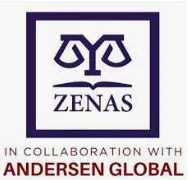Transactions between related parties bear an inherent risk of manipulating the transaction to minimize tax liabilities, hence the need for transfer pricing rules. Transfer pricing is premised upon the arms length principle, which seeks to rationalize tax obligations incurred between related parties to the same transaction. The thrust of this principle, which forms the foundation of transfer pricing rules, is to mitigate tax avoidance resulting from controlled transactions between related parties and ensure such transactions are at parity with other uncontrolled transactions in similar circumstances.
The transfer pricing regime in Zimbabwe is founded upon s98B of the Income Tax Act [Chapter 23:06]. The aforementioned provision enjoins the application of the arms length principle in transactions between associates. Furthermore the Commissioner of the Revenue Authority is empowered under that provision to "distribute, apportion or allocate" tax liability arising from a transaction between associates such that the tax incurred, commensurate with similar transactions between unrelated parties, is accurately reflected. The tenor of the transfer pricing provisions is also reflected in s98 of the Income Tax Act [Chapter 23:06], which deals generally with issues of tax avoidance. The latter provision also employs the arms length principle as the measure to moderate tax liabilities arising from transactions where rights and obligations would usually not arise in transactions consistent with the arms length principle. Notwithstanding s98B of the Income Tax Act [Chapter 23:06], which now expressly addresses transfer pricing, Justice Kudya in CF (Pvt) Ltd v Zimbabwe Revenue Authority HH99-18 opined that either the general deduction formula under s15 (2) or s24 or s98 of the Income Tax Act [Chapter 23:06] could be employed to deal with transfer pricing matters.
Any assessment regarding whether a taxpayer has reduced, postponed or limited his/her tax able income should begin with a computation of what constitutes taxable income. In CF (Pvt) Ltd, the court highlighted s15 (2) of the Income Tax Act [Chapter 23:06] because it allows for deductions for expenditure and losses incurred for the purposes of trade or production of income, but not expenditure or losses of a capital nature. The provisions of s24 of the Income Tax Act [Chapter 23:06] applies to any carrying on business in Zimbabwe, and this provision was designed to deal effectively with business transactions between a taxpayer and another person who fail the arm's length test. Section 24 is particularly important because its application extends transfer pricing rules to both domestic and cross border transactions between related parties. A reading of the provisions outlined above, as identified in CF (Pvt) Ltd, together with sections 98 discloses the thresholds to be met before transfer pricing rules become applicable. A summation of the threshold is laid out as follows:
a) Any person carrying on business in Zimbabwe, participates directly or indirectly in the management, control or capital of a business carried on by some other person outside Zimbabwe
b) Any person carrying on business in outside Zimbabwe, participates directly or indirectly in the management, control or capital of a business carried on in Zimbabwe
c) Any person who participates directly or indirectly in the management, control or capital both of a business carried on in Zimbabwe by some other person and of a business carried on outside Zimbabwe by some other person
d) If the business or financial relations in the preceding provisions do not meet the arms length test as per the Commissioner's opinion, which may be informed by what the Commissioner might expect to have been made or imposed between two persons dealing with each other at arm's length.
Section 98B of the Income Tax Act [Chapter 24:06], specifically applies to transactions between associates and the definition of the term associates is defined under s2A of the same statute. The definition is broad as it applies to any person, other than an employee, who acts I accordance with the directions, suggestions or wishes of another person. Section 2A extends the definition of person to include a relative, partner, partnership in which the person controls more than 50% , company of that person or trust in which the person is a trustee. A cumulative interpretation of the aforementioned provisions makes apparent that transfer pricing rules potentially apply to vast majority of transactions in commerce should such transactions fail to conform the arms length test.
In CRS (Pvt) Ltd v Zimbabwe Revenue Authority HH 728-18, the court considered the question of whether the scope of s98 of the Income Tax Act [Chapter 23:06] encompasses non-existent income, to which the court concluded in the affirmative. While the court stated that income tax legislation in Zimbabwe is designed to tax created income as opposed to notional income, s98 of the Income Tax Act [Chapter 23:06] does not preclude the Commissioner from imputing and taxing notional income as such discretion hereunder is wide and may include notional income. The court proceeded to hold that the "stipulated effect" of the scheme was such that there was a reduction, postponement or avoidance of tax liabilities incurred from the transactions, hence non-existent income falls within the scope of s98 wherein the Commissioner is vested with broad powers to compute notional tax. The matter involved as series of transactions between related parties whereby employees of the South African related party were remunerated by the Zimbabwean related party, and the latter related party would consistently declare losses on their tax returns. The court took cognizance of the "notorious fact of commercial life that related parties enter into commercial arrangements" however concluded that the agreements were carried out in a manner that would not be normally employed in such transactions. It is apparent from the learned judge's interpretation in the CRS (Pvt) Ltd matter, the arms length principle makes use of trade usages, customs and practices as the benchmark of normalcy such that any deviation from such standard potentially falls foul of the arms length principle.
In Hicklin v Secretary for Inland Revenue 1980 (1) SA 481 (A), approved by the in court in CRS (Pvt) Ltd, prescribed the practical method of applying the arms length as follows:
- Consider the whether the rights and obligations created are likely to be regarded as normal than abnormal
- Consider the means or manner employed to enter the transaction or carrying it out are more likely to be normal than abnormal
- Consider if either the rights and obligations or means or manner employed have factored in the prevailing circumstances in which the transaction was concluded.
An anecdote of interest from the CRS (Pvt) Ltd case was opinion expressed by the court that it seems trite that primary objective of a private company is to make a profit, thus it followed that the scheme adopted by the related parties whereby the Zimbabwean party declared losses in the years in question, as a method of avoiding liquidation and retrenchments, was deemed to have been inconsistent with the arms length principle. In CF (Pvt) Ltd the court stated the reservation of ownership was not only an arm's length condition recognised both at common and statutory law ; but was also a standard condition of international sales contracts hence also an arm's length condition akin to domestic sales contracts. The reservation of ownership is however not an essential element to a sale thus Justice Kudya in CF (Pvt) Ltd stated that ownership is not synonymous with participating in the management, control or capital of business carried on by an intermediary outside Zimbabwe. The provisions of s98 of the Income Tax Act [Chapter 23:06] are therefore not only focused on transactions whose primary intent is to minimise liability were under the fiscal laws such liability attaches, it also extends to transactions whose practical effect is to reduce or limit tax liability.
The courts have also considered the question of which, between the taxpayer and Revenue Authority, bears the onus of proof to show whether or not transfer pricing rules have been adhered to; in transactions that meet threshold for the application of such rules. Apposite to the position adopted by the South African courts, the position in Zimbabwe as enunciated in CRS (Pvt) Ltd and later followed in CF (Pvt) Ltd, is that the onus rests on the taxpayer to show the Commissioners opinion that a transaction has breached the arms length principle. This is consistent with a hallmark principle of our law; that he who alleges must prove. In CF (Pvt) Ltd the court stated the transaction must fall within the scope of s24 of the Income Tax Act [Chapter 23:06] before the Commissioner can make his/her computation based on similar transactions which invariably make reliance upon prevalent standard terms or practices. The status of the Commissioners opinion has also come under consideration, with particular focus on whether the Commissioner can vacillate between opinions. In CF (Pvt) Ltd the court held the Commissioner's opinion carried the status of a judicial decision, hence the opinion connotes the Revenue Authority's final ruling. The court in CF (Pvt) Ltd adopted the decision in Knop v Johannesburg City Council 1995 (2) SA 1 (A) wherein the Commissioner's opinion was characterised as an "adjudication in the juristic sense i.e. a final and definite result in consequence of examining a question".
Further to the statutory provisions pertaining to transfer pricing under section 98 B of the Income Tax Act [Chapter 23:06], a reading of the matters that have come before the courts have disclosed that the Revenue Authority employs an assessment method termed functional analysis for the purposes of computing the accuracy of the taxpayers taxable income. The legal validity of this method of computation was a subject of discussion in CF (Pvt) Ltd wherein Justice Kudya pronounced that regardless of the fact that the law made no express provision for the use of this method, there is nothing under Zimbabwean law that precludes the Commissioner from employing functional analysis to accurately determine a taxpayer's taxable income. Functional analysis is an international best practice employed globally to assess the true incomes in transactions between related parties and whether such transactions are compliant with the arms length principle. The reliance on functional analysis to determine the taxpayer's true income is incumbent on the transaction falling within the ambit of s24 Income Tax Act [Chapter 23:06]. The court ruled that, pursuant s 7 of the Interpretation Act [Chapter 1:01], the heading to s24 Income Tax Act was anomalous and the reference to double taxation should be disregarded as such reference was not embodied in the body of the provision. Whether a transaction is within the ambit of s24 Income Tax Act [Chapter 23:06] is a question of fact.
The preceding discourse is a summation of how the Zimbabwean courts have interpreted transfer pricing rules in this jurisdiction. Though legislation specifically addressing transfer pricing was first promulgated in the year 2014, it is evident from common law and statutes that principles like the arms length principle had long been subject to judicial interpretation. The arms length principle, as interpreted by the Zimbabwean courts, can be defined as the test for normalcy applied to transactions between related parties to ensure taxpayers do not limit or reduce tax liabilities under Zimbabwean fiscal laws. Case law reveals that beyond the provisions under s98A specifically dealing with transfer pricing, there are other provisions within the Income Tax Act [Chapter 23:06]specifically sections 15(2); 24 and 63 which should be read together with s98A in interpretation of transfer pricing laws in Zimbabwe. With the Revenue Authority having collected the inaugural transfer pricing returns in the last quarter of the year 2020, an appreciation of the court's interpretation will be indispensible to parties whose transactions fall within the scope of the transfer pricing rules.
The content of this article is intended to provide a general guide to the subject matter. Specialist advice should be sought about your specific circumstances.

